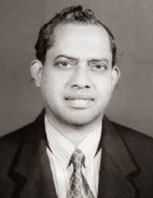|
observer |
|
|
|
|
|
OTHER LINKS |

|

|

|
Shot in the arm for rubber cultivation, productivity
A program aimed at increasing the land area of rubber cultivation and productivity has been implemented by the Rubber Development Department. The demand for natural rubber has been increasing in the local and global market where rubber prices also sky rocketed during the past few years. According to the Director General of the Rubber Development Department Wimal Rubasingha, the farsighted and prompt measures taken by the government enabled it to arrest the downtrend in rubber cultivation and also the industry. The rubber subsidy was increased by 25 percent under the Mahinda Chintanaya in the last budget. Accordingly the subsidy on rubber replanting was increased to Rs. 125,000 per Ha. The demand for rubber replanting specially among the small rubber planters has shown a remarkable increase, he said. In 1981 the total rubber cultivation in Sri Lanka was 250,000 Hectares. It dropped to 115,319 Hectares in 2004 due to urbanisation and the decline in rubber prices. Small rubber land holders and the plantation companies changed their rubber plantations to some other high valued plantations due to the low rubber prices in the global and local markets which prevailed up to the middle of 2003. The present trend of high prices for rubber specially for natural rubber started in the middle of 2003. Rubber, a major industry in Sri Lanka makes a significant contribution to the national economy. The industry generates many employment opportunities to the rural population. The Rubber Development Department is expected to implement a series of welfare measures for rubber tappers soon. Rubber tappers are the livewire of the rubber industry. The scarcity of rubber tappers in the country is one of the major problems faced by small scale rubber land holders. The rubber tappers training scheme is being implemented islandwide and Rs. 650,000 was spent last year. The total production of natural rubber in 2005 was 104,500 M.T. and 65 percent of it was used for end products in local industries. Only 35 percent natural rubber was exported as sheets and crepe. According to a survey by the Department Sri Lanka will need 120,000 M.T. of natural rubber in 2015 for local consumption only. Ratnapura, Kalutara, Kegalle and Galle belong to the wet zone of the country and are considered the traditional rubber growing areas where rubber cultivation can be expanded. The remarkable feature of the government's rubber extension program is the introduction of the non-traditional rubber planting areas in the country such as the Moneragala and Hambantota Districts. Experiments which commenced in 2004 have succeeded and 920 Ha of rubber have been planted in the Moneragala district. It is expected to expand this up to 2,360 Ha this year. According to plantation sources the Wellassa rubber company promoted rubber in non-traditional areas. This is in view of the growing natural rubber requirements of the domestic rubber industry. It is identified that some DC areas of the Habantota District such as Walasmulla, Weerakatiya, Beliatta and Katuvana are also suitable for rubber cultivation. Ninety-nine percent of the planting materials for replanting and new planting schemes are also supplied by the nurseries run by the Rubber Development Department islandwide. A twenty-five acre plot of land which belongs to the Middeniya nursery was allocated one million rupees recently to develop the rubber planting materials section in the nursery to implement the Hambantota rubber planting scheme. |








